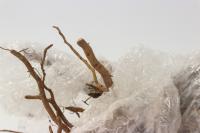1、 Curing method
1. Soil: Ruby is suitable for growing in soil with good drainage and ventilation. It can be mixed with cinder, peat soil and perlite. The viscosity of the soil should not be too large, otherwise the root will not grow
2. Sunshine: Ruby has strict requirements for light. Insufficient light will cause its leaves to turn green, while too much light will make it black and even black spots. Therefore, shading should be carried out in summer and long-term illumination should be met in other seasons

3. Watering: Ruby prefers a humid environment. Daily watering should be frequent, but the amount of water should be controlled. Water 1-2 times a day in summer, and spray water to moisturize. Less water is needed in winter, and watering should be stopped in the environment of - 5 ℃
4. Fertilization: the growth of ruby is inseparable from sufficient nutrients. In its growth period, we should apply fertilizer frequently, and apply thin cake fertilizer and water every 1-2 weeks. If the temperature in winter is appropriate and it continues to grow, it can also be fertilized appropriately. If the temperature is too low, do not fertilize

2、 Reproductive skills
1. Cutting: cutting is generally carried out from May to June. Cut its stem segment with leaves and insert it into peat soil. After that, it is poured with water and covered with plastic film. It can take root in about 3 weeks
2. Ramets: ramets are carried out in spring. After picking the heart, its branches will grow better and form clumps at the same time. In the spring of the next year, ramets can be carried out

3、 Pest control
1. Disease: leaf spot is a common disease of ruby. The diseased plants will grow black spots on the leaves. The diseased leaves need to be removed and sprayed with carbendazim
2. Insect pests: the main pest of ruby is scale insects. It can catch pests manually or kill them with chlorpromazide. Then put the plant in a well ventilated place to help it recover quickly

 jackfruit
jackfruit snake plant
snake plant hibiscus
hibiscus hydrangea
hydrangea lavender
lavender Green roses climb al...
Green roses climb al... If you don't pay att...
If you don't pay att... Management of four g...
Management of four g...

































